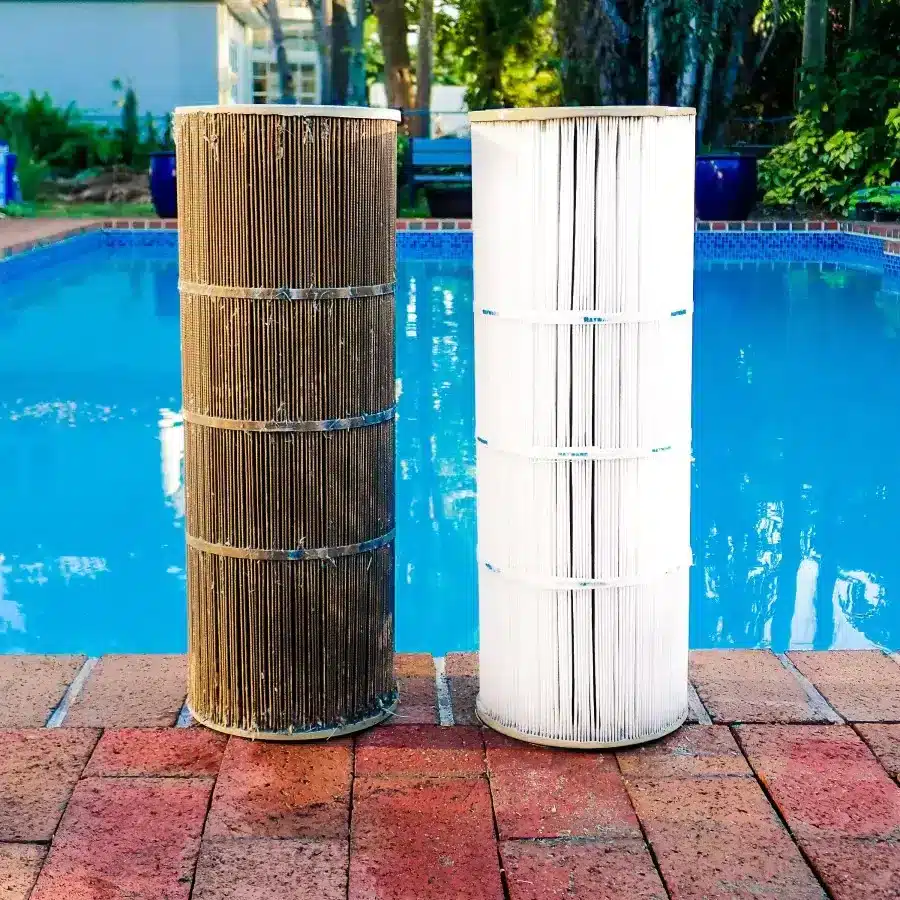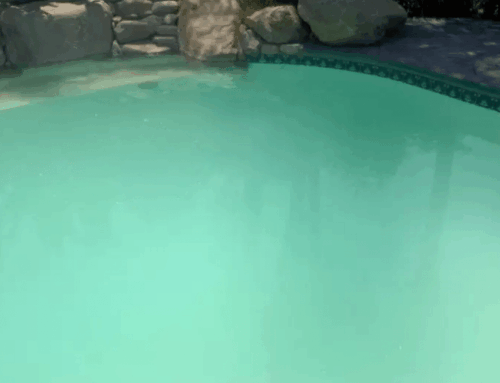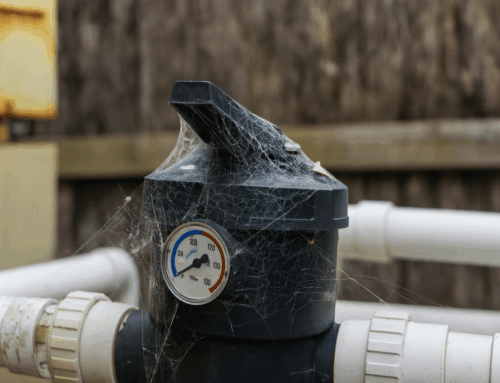Clean pool filter cartridges keep pool water clear, reduce chemical use, and protect your pump and heater. This guide shows when to clean, which tools to use, and the right step by step method to rinse and deep clean a cartridge filter without damaging the pleated surface. Browse options and sizing on our pool filters page.
What is a pool filter cartridge and how does it work?
A pool filter cartridge is a pleated element inside a cartridge filter tank that traps fine dirt and other contaminants as pool water flows through the filtration system. The pleated material increases surface area so the filter removes small particles that a skimmer basket or pump strainer basket cannot catch. When pores clog with oils or decomposed leaves, pressure rises and flow drops. Regular cleaning restores performance and keeps your pool water clean.
How often should you clean a pool filter cartridge?
Rinse the cartridge every 4 to 6 weeks during the swimming season or when the pressure gauge climbs 8 to 10 kPa above your recommended starting pressure. Clean more often after storms, heavy bather loads, or when algae is present. A deep clean soak two to four times per year keeps oils and scale from hardening in the fabric.
Signs the cartridge needs cleaning
- Filter pressure is 8 to 10 kPa higher than clean baseline
- Return jets feel weak and the pool pump runs louder
- Cloudy water persists even with correct chemistry
- The element looks grey or tan with visible residue in the pleats
What tools do you need to clean a pool filter cartridge?
You need a regular garden hose with a gentle hose attachment, a soft brush, a large bucket or trash can for soaking, and a suitable cartridge cleaning solution. Have silicone lubricant for o rings and a clean cloth for the filter lid and tank surfaces.
Toolkit checklist
- Garden hose with a fan or narrow jet setting that provides moderate pressure
- Soft brush or pleat comb to carefully brush dirt from pleats
- Large bucket, tub, or clean trash can deep enough to submerge the element
- Commercial cartridge cleaning solution or a TSP substitute for degreasing
- Muriatic acid only after degreasing to remove calcium carbonate scale when required
- Silicone grease for tank o rings and air relief o rings
- PPE such as gloves and eye protection when handling chemicals
What is the best way to clean a pool filter cartridge?
Rinse first to remove loose debris, then deep clean with a degreasing soak, and only use an acid bath if scale remains after degreasing. Follow the steps below to avoid damaging the element and to return flow to normal.
Step 1. Turn off power and relieve pressure
Switch the pump off at the controller and the circuit breaker, then open the air relief valve on the filter lid. Wait until the pressure gauge drops to zero. This protects you and the equipment when you open the filter tank.
Step 2. Open the filter tank and remove the cartridge
Undo the clamp or lid, lift the filter lid carefully, and remove the filter cartridge from the tank. Note the orientation and check the tank o ring for wear. Place the element on level ground.
Step 3. Rinse the cartridge with a garden hose
Use a steady stream of fresh water and work from top to bottom, spraying between each pleat at a 45 degree angle. Rotate the element as you rinse to remove dirt from the pleated surface. Aim for moderate pressure. High pressure can tear fibres and open the pores so they no longer trap small particles.
Rinsing tips
- Start on the outside and rinse towards the inside
- Pay close attention to the ends where debris collects
- Avoid pressure washers and harsh nozzles that cut fibres
Step 4. Inspect for damage
Check the end caps, centre core, and pleats for cracks, tears, or flattening. If you see brittle plastic, broken bands, or pleats that will not spring back, plan to replace the element. Cleaning will not fix structural damage.
Step 5. Degrease with a cartridge cleaning solution
Soak the element in a degreasing bath to remove body oils, sunscreen, and fine residues that a rinse cannot lift. Mix the cleaner according to the product’s instructions in a tub or trash can and submerge the cartridge fully for the recommended time.
Degreasing notes
- A TSP substitute or a dedicated cartridge cleaner works well on oils
- Use cool to lukewarm water and keep the element fully covered
- Agitate the bath gently to move solution through the pleats
- Rinse thoroughly with fresh water after soaking
Step 6. Remove calcium scale only if needed
If the pleats still feel rough or show white crusts after degreasing, use a mild acid bath to dissolve calcium carbonate. Always degrease first because acid can set oils into the fabric and ruin the cartridge.
Acid bath method
- Mix a weak solution of muriatic acid in water. Add acid to water, never water to acid
- Typical ratio for light scale is one part acid to ten parts water. Follow label directions
- Submerge the element until fizzing slows, usually a few minutes only
- Neutralise and dispose of the bath safely, then rinse the cartridge thoroughly
Step 7. Let the cartridge dry and reassemble the filter
Allow the element to drip dry briefly, then reinstall it in the filter tank. Lubricate the tank o ring lightly with silicone grease, clean the sealing surfaces, and refit the lid. Tighten the clamp evenly and close the air relief.
Step 8. Restart the system and record pressure
Restore power, start the pump, and bleed air until a steady stream of water emerges from the relief valve. Record the new clean pressure on the gauge. This becomes your reference for future cleanings.
Can you use a pressure washer to clean a pool cartridge?
No. Pressure washers force fibres apart, tear pleats, and shorten the life of the filter cartridge. Use only a regular garden hose with moderate pressure. A dedicated hose attachment that directs a thin fan of water into the pleats speeds up cleaning without damage.
What happens if you do not clean your filter cartridge regularly?
Flow drops, energy use rises, and water quality suffers. A clogged element makes the pump work harder, can trigger heater faults or salt chlorinator low flow errors, and allows fine debris to pass as pores block unevenly. Ignoring maintenance also shortens the lifespan of the cartridge and can lead to cloudy water and algae.
How do you know when your cartridge needs cleaning between schedules?
Use the pressure gauge and visual checks. Clean when pressure is 8 to 10 kPa above your clean baseline or when return jet flow feels weak. If the pleats look matted with residue, clean even if pressure is lower than expected.
What is the difference between rinsing and deep cleaning?
Rinsing removes loose dirt. Deep cleaning dissolves oils and scale lodged deep in the fabric. A clean looking cartridge can still hold oils that reduce filtration. Combine both methods for best results.
Should you use a cartridge cleaning solution or just water?
Use water for routine rinses and a cartridge cleaning solution for deep cleans. A degreaser is essential if swimmers use sunscreen or if you notice a slippery feel on the pleats. Plain water will not remove built up oils effectively.
Can you use household chemicals to clean a pool filter cartridge?
Avoid dishwashing detergent and household cleaners that foam or leave residues. Use a pool specific cleaner or a TSP substitute designed for filter materials. Do not use flocculants or clarifiers in the soak. If scale remains after degreasing, use a controlled acid bath as described.
What causes pool filter cartridges to clog quickly?
Oils, fine dust, algae, and decomposed leaves clog pleats faster than usual. Short pump run times and high bather loads add to the burden. If algae is present in the pool, expect to clean more frequently until water is balanced and clear. (fyi our team are expert in green pool cleaning)
Step by step quick guide
Follow this condensed checklist when time is short.
- Turn off the pool pump and power
- Open the filter lid and remove the cartridge
- Rinse pleats with a garden hose at moderate pressure
- Soak in a degreasing solution, then rinse again
- Use a mild acid bath only if scale remains after degreasing
- Inspect o rings, clean the tank, and reassemble
- Restart, bleed air, and note the clean pressure
Can you backwash a pool filter cartridge?
No. Cartridge pool filters do not backwash. Only sand filters and some media filters have a backwash function. Cartridges require manual removal and cleaning as described.
How often should you replace a pool filter cartridge?
Replace the element every one to three years depending on pool size, bather load, and care. Replace sooner if the core cracks, the end caps become brittle, or pleats collapse and will not recover after cleaning.
Replacement triggers
- Persistent high pressure immediately after cleaning
- Torn fabric, loose bands, or broken centre core
- Pleats that remain flat and clumped after soaking and rinsing
How do you maintain your cartridge filter for longer life?
Keep pressure logs, clean on schedule, and avoid harsh tools. Rinse little and often, use the right cleaning solution, and keep the filter tank o ring lubricated so the lid seals without over tightening.
Good habits
- Record clean pressure after each service
- Empty skimmer and pump baskets weekly to reduce debris load
- Run the filtration system long enough for the season to remove small particles
- Shower before swimming to reduce oils in the water
Safety notes when cleaning filter cartridges
Treat chemicals with care and depressurise the filter before opening. Wear gloves and eye protection when mixing cleaning solution or acid. Add acid to water slowly and keep children and pets away from the work area. Store chemicals in a cool, ventilated space.
Troubleshooting and FAQs
The filter lid will not budge. Confirm pressure is at zero, tap the clamp gently to release tension, and check for hidden locking pins. Do not pry with tools that could damage the tank.
Air returns to the pump after reassembly. Inspect and lubricate the lid o ring, tighten evenly, and replace worn o rings on the air relief.
Pressure rises hours after cleaning. The pool may have algae or fine dust. Improve water balance, increase run time, and consider a clarifier. Clean again once the pool clears.
Can I clean cartridges with hot water. Use cool to lukewarm water only. Hot water can deform plastics and soften glue bonds in the filter cartridge.
Is dishwashing detergent OK in a pinch. Avoid household detergents. Use a TSP substitute or a pool specific cleaner to avoid foaming and residues.
Bottom line
Cleaning pool filter cartridges on schedule restores flow, lowers energy use, and keeps pool water clear. Rinse with a regular garden hose at moderate pressure, deep clean with the correct solution, and use acid only when scale remains after degreasing. Watch the pressure gauge for the right time to clean, replace damaged elements promptly, and your cartridge filter will keep the filtration system working efficiently year round.

With over 20 years of industry experience, Adrian Mole is the founder of 1 Pool Care, a leading mobile pool service in Perth. Known for his expert knowledge and reliable service, Adrian delivers professional pool cleaning, equipment repairs, and water balancing across the metro area. Backed by SPASA accreditation, he’s committed to quality, convenience, and customer satisfaction.












Social Media